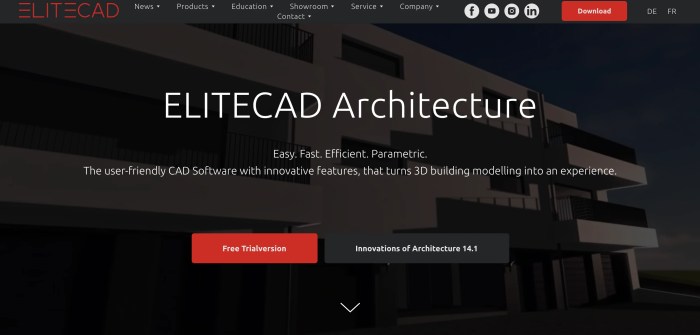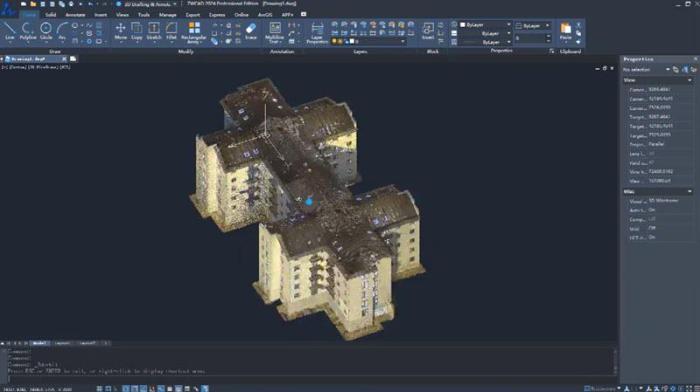User-friendly CAD software for architectural designs – Architectural design demands precision, creativity, and efficiency. Choosing the right Computer-Aided Design (CAD) software is crucial for architects to translate their visions into reality smoothly. While powerful professional CAD software exists, the learning curve can be steep. This article explores user-friendly CAD software options specifically tailored for architectural designs, balancing ease of use with robust functionality. We’ll delve into key features, benefits, and considerations to help you select the perfect tool for your needs.

Source: shopify.com
Understanding the Needs of Architectural CAD Software
Architectural CAD software needs to go beyond basic drafting. It must handle complex 3D modeling, detailed plan creation, material specification, collaboration features, and rendering capabilities. However, user-friendliness is paramount. Architects need software that allows them to focus on design, not wrestling with a complicated interface. This necessitates intuitive navigation, clear toolbars, and readily available tutorials and support.
Essential Features for User-Friendly Architectural CAD Software:, User-friendly CAD software for architectural designs
- Intuitive Interface: A clean, uncluttered interface with easily accessible tools is crucial for efficient workflow.
- 2D and 3D Modeling Capabilities: The ability to seamlessly switch between 2D drafting and 3D modeling is essential for visualizing designs from various perspectives.
- Advanced Drawing Tools: Precise drawing tools, including lines, arcs, curves, and shapes, are fundamental for accurate representation.
- Dimensioning and Annotation: Clear and accurate dimensioning and annotation features are crucial for communication with contractors and clients.
- Material Libraries and Specifications: Pre-loaded material libraries simplify the process of specifying materials and textures for realistic renderings.
- Rendering and Visualization: High-quality rendering capabilities are essential for showcasing designs effectively to clients.
- Collaboration Tools: Features that facilitate collaboration among team members are increasingly important in modern architectural practices.
- Export Options: The ability to export designs in various formats (PDF, DWG, etc.) for sharing and printing is essential.
- Strong Customer Support: Access to reliable customer support, tutorials, and online communities is crucial for resolving issues and learning new features.
Top User-Friendly CAD Software for Architectural Designs
Several CAD software options stand out for their user-friendly interfaces and powerful features specifically designed for architectural applications. Here are some notable examples:
1. SketchUp
SketchUp is renowned for its intuitive interface and ease of use, making it a popular choice for both beginners and experienced architects. Its strong focus on 3D modeling makes it ideal for visualizing designs. SketchUp offers a free version and a pro version with advanced features.
2. Revit
While Revit has a steeper learning curve than SketchUp, its BIM (Building Information Modeling) capabilities are unmatched. It’s a powerful tool for managing complex projects and collaborating with other professionals. Revit’s extensive libraries and features make it a valuable asset for large-scale projects.

Source: zwsoft.com
3. ArchiCAD
ArchiCAD is another BIM-focused software known for its user-friendly interface and comprehensive features specifically tailored for architectural design. It excels at managing complex projects and facilitating collaboration among team members.
4. Vectorworks Architect
Vectorworks Architect offers a balance between ease of use and powerful features. It’s suitable for a wide range of architectural projects, from residential designs to large-scale commercial buildings. Its strong rendering capabilities and comprehensive toolset make it a versatile option.
Choosing the Right Software: Factors to Consider
Selecting the best CAD software depends on several factors:
- Budget: Software costs vary significantly, from free options to expensive professional suites.
- Project Scale and Complexity: The complexity of your projects will influence the features you need.
- Team Size and Collaboration Needs: Consider whether you need software that supports collaboration among multiple users.
- Learning Curve: Choose software with a learning curve that aligns with your experience level and available training resources.
- Technical Requirements: Ensure your computer meets the minimum system requirements for the software you choose.
Frequently Asked Questions (FAQ): User-friendly CAD Software For Architectural Designs
- Q: What is the best free CAD software for architectural design?
A: SketchUp’s free version offers a good starting point for beginners, but its capabilities are limited compared to paid versions. Other free options exist but may lack the advanced features needed for complex architectural projects. - Q: Is learning CAD software difficult?
A: The difficulty varies depending on the software and your prior experience. User-friendly options like SketchUp have a relatively gentle learning curve, while more advanced software like Revit requires more time and effort to master. - Q: What are the benefits of using CAD software for architectural design?
A: CAD software enhances accuracy, improves efficiency, facilitates collaboration, enables better visualization, and ultimately leads to better designs. - Q: Can I use CAD software on a tablet?
A: Many CAD software options offer mobile apps or have tablet compatibility, allowing for on-the-go design and collaboration. However, the full functionality might be limited compared to desktop versions. - Q: How much does architectural CAD software cost?
A: Prices vary widely, ranging from free to thousands of dollars per year depending on the software and licensing options.
Conclusion
Selecting the right user-friendly CAD software is a critical decision for architects. By carefully considering your needs, budget, and experience level, you can find the perfect tool to streamline your workflow and bring your architectural visions to life. Remember to explore free trials and demos before committing to a purchase.
References
Call to Action
Ready to elevate your architectural design process? Explore the user-friendly CAD software options discussed above and find the perfect fit for your needs. Start your free trial today and experience the power of efficient and intuitive architectural design!
Questions Often Asked
What are the common file formats used in user-friendly CAD software for architectural designs?
Common formats include DWG, DXF, and SKP, allowing for seamless collaboration and data exchange.
How much does user-friendly CAD software typically cost?
Pricing varies widely depending on the software and licensing options, ranging from free open-source solutions to subscription-based professional packages.
What are some essential features to look for in user-friendly CAD software?
Essential features include intuitive interface, 2D/3D modeling capabilities, rendering tools, and BIM (Building Information Modeling) integration.
Is cloud-based CAD software a viable option for architectural design?
Yes, cloud-based options offer advantages such as accessibility, collaboration, and data backup, but reliable internet connectivity is crucial.
